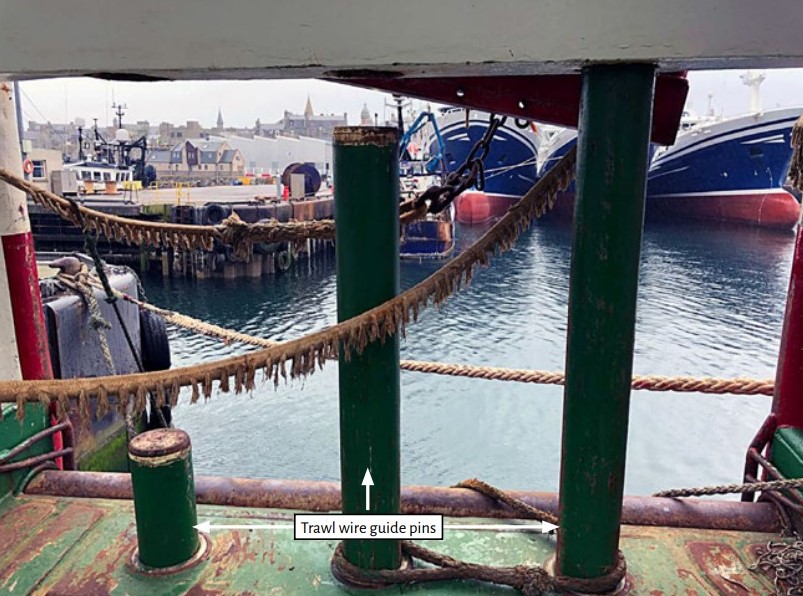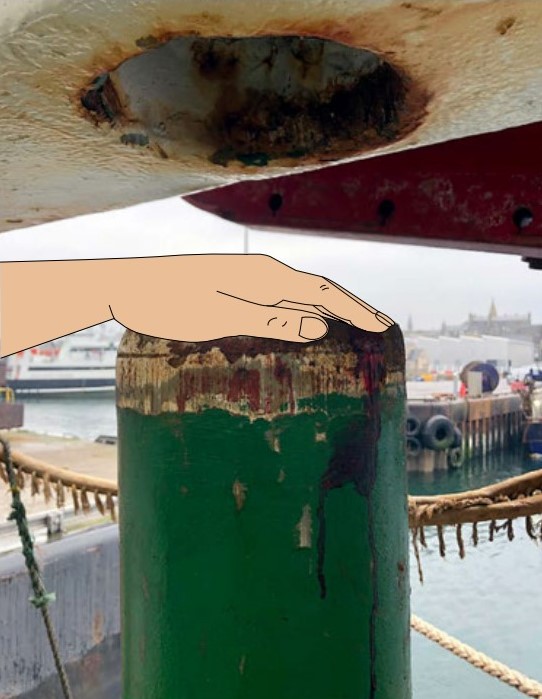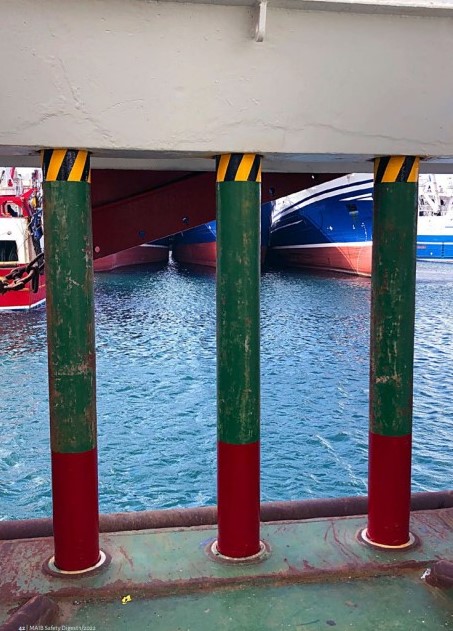In its latest Safety Digest, UK MAIB provides lessons learned from an incident where a crew member’s hand was crushed when it became trapped between a hydraulically operated trawl wire guide pin and the deckhead at the stern of the vessel.
The incident
On board a large stern trawler, a crew member’s hand was crushed when it became trapped between a hydraulically operated trawl wire guide pin and the deckhead at the stern of the vessel. The crewman needed surgery on his damaged hand and fortunately made a full recovery.
The vessel was fitted with three 15cm diameter pins on each side of the boat. Hydraulically operated, they rose out of the deck and located into sockets in the deckhead.

The crew had just completed moving their vessel to another berth within the port and had secured its mooring ropes. As an additional security measure, a further stern line was in the process of being put out, with the intention that the vessel end would be looped over one of the large diameter trawl guide pins in the transom to secure it.
The injured man had rested his hand on the top of the pin just before it was raised by another crew member operating the hydraulic controls. His hand was then caught between the pin and the deckhead.

The company that owned the fishing vessel completed an accident investigation and a review of its risk assessments. Among the mitigating measures identified, it undertook to paint warning marks both on the top and bottom of each pin so that the red warning paint on the bottom appeared when the pin was raised.

Lessons learned
#1 Check: Working on any vessel is hazardous, particularly if there is moving machinery in the vicinity. If machinery can be started or be caused to move remotely, then the machinery operator must check that the workspace is clear before doing so.
#2 Hazard: In this case, the crew member absentmindedly placed his hand into a dangerous location. The company has taken steps to visually highlight the danger zone to remind workers of potential hazards. Emphasising hazards or hazardous areas around a vessel is a simple, cheap and effective means of reducing risks and can become part of onboard training. Getting crew to identify hazards and then to highlight them can be an effective means of safety management engagement on board any vessel.































































